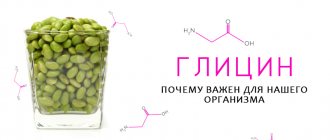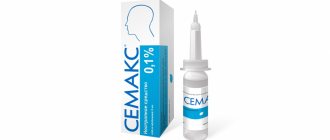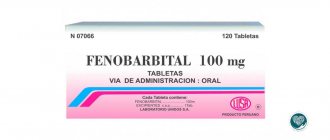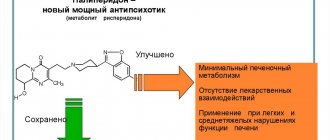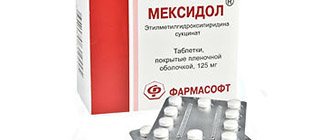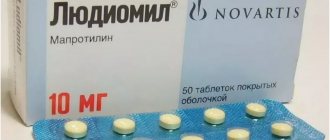For various forms of impaired cerebral circulation, doctors prescribe medications from the group of psychoanaleptics. These products are widely used in cardiology, neurology, ophthalmology and other branches of medicine. A representative of this group is Vinpocetine - it has an affordable price and is often used in the complex treatment of vascular diseases.
Despite its availability, many people buy Vinpocetine analogues, the use of which has a similar effect.
pharmachologic effect
Manufacturer: numerous Russian and foreign
Release form: tablets, injection solution
Active ingredient: Vinpocetine
Vinpocetine 5 mg and Vinpocetine forte 10 mg are nootropic and psychostimulant drugs.
The main pharmacological properties are the following:
- improvement of metabolism in the brain;
- normalization of blood rheology;
- stimulating blood flow in the brain;
- reducing the effect of toxins on the functioning of the nervous system;
- neuroprotective properties;
- increase in ATP content in neurons;
- increased transport of glucose to nerve cells and fibers;
- antioxidant effect;
- reduction of blood viscosity due to inhibition of platelet aggregation;
- reduction of vascular resistance in the brain;
- improving blood transport to areas with ischemia and hypoxia;
- slight drop in pressure.
The complex effect on the body ensures the rapid onset of effects from the use of Vinpocetine and expands the scope of application.
About the drug
Before considering drugs that replace Vinpocetine, it is worth familiarizing yourself with its properties, why is the medicine prescribed and how to use it?
Vinpocetine is a drug that improves blood circulation and metabolic processes in parts of the brain. The intake allows you to dilate blood vessels, increase blood flow, and provide the brain with nutritional components for normal functioning.
Release forms: tablets (5 mg) and concentrated solution for intravenous administration (10 mg). The manufacturer produces a stronger drug - Vinpocetine Forte. Contains tablets of 10 mg of active substance. Prices for Vinpocetine Forte in the form of tablets or solution in pharmacies are slightly higher, but do not exceed 100 - 200 rubles.
In some countries, Vinpocetine is registered as a common dietary supplement. In our country, it refers to drugs that have undergone the necessary clinical trials.
The active ingredient is Vinpocetine, which has a vasodilating effect. The main substance is produced from Vincamine and the alkaloid of the Vinca minor plant. Therefore, some sources classify it as a natural vascular remedy.
Doses and duration of administration are determined individually for each patient.
The instructions for use contain a number of contraindications and side effects. That is why it is important to study the contents of the insert before treatment.
Over the past few years, many Vinpocetine analogues have appeared on the pharmaceutical market, which are divided into synonyms (with a similar composition) and analogues (different composition, but similar properties). Such medicines are produced by domestic and foreign manufacturers, have different prices, and most often differ in the composition of auxiliary components and production technology.
The need to replace Vinpocetine with analogues increases if it is not on sale or if there are contraindications to its use. In any case, the replacement of medications must be agreed with the attending physician.
Indications for use of Vinpocetine
The drug is prescribed for diseases of various areas:
- Neurological - encephalopathy with cognitive dysfunction, dizziness, headaches, acute disorders of blood flow in the brain, consequences of head injuries, atherosclerotic damage to cerebral vessels.
- Otolaryngological - hearing loss, especially in the elderly, Meniere's disease, hearing loss of various origins, dizziness due to damage to the hearing aid.
- Ophthalmological - vascular eye pathologies, atherosclerotic degenerative changes, consequences of vasospasms, vascular occlusion, secondary glaucoma.
Vinpocentine is prescribed in the complex therapy of these pathologies after examining the patient and assessing his condition.
Vinpocetine - instructions for use
Vinpocetine tablets are used orally. Injectable forms of the drug are produced in ampoules. Doses and dosage regimens are selected by the doctor, taking into account the underlying disease and condition of the patient.
The medication is not prescribed to patients who are allergic to the components of the medication, or in childhood.
During pregnancy and lactation, the drug is used to a limited extent and only under the supervision of a doctor.
Possible side effects include:
- dyspepsia,
- swelling of the conjunctiva,
- headaches and dizziness,
- hypotension,
- weight gain,
- neurological disorders,
- rash,
- dermatitis,
- arrhythmias,
- myocardial infarction.
These disorders develop with irrational and very long-term use of Vinpocetine. Compliance with the dose is the only prevention of complications.
Dosage of Vinpocetine tablets
The drug is taken orally from 1 to 2 tablets three times a day. The duration of treatment is selected individually depending on the severity of the disease.
Dosage of injection forms
Vinpocetine in 5 mg/ml ampoules is administered only intravenously. The average dose per day is 20 mg.
How to take Vinpocetine: before or after meals
The tablets should be taken after meals. Wash down with at least 100 ml of clean water at room temperature without gas. The tablet is swallowed whole, do not crush or chew.
A decrease in the effectiveness of the drug may occur if there are violations of the rules for taking Vinpocetine, which are indicated in the instructions for use.
Indications and contraindications for Vinpocetine therapy
The instructions contain the following recommendations for the use of the drug:
- chronic, acute circulatory failure in the brain;
- encephalopathy arising from trauma;
- vascular damage to the brain with memory impairment, cephalalgia, dizziness;
- VSD during menopause;
- decreased hearing acuity of toxic, vascular etiology;
- non-inflammatory diseases of the inner ear, etc.
Vinpocetine is contraindicated in patients:
- after acute hemorrhagic stroke;
- with ischemic heart disease, arrhythmia;
- intolerance to the component composition;
- underage.
During therapeutic procedures, Vinpocetine in some cases provokes adverse reactions. The main symptoms are presented:
- increased heart rate, unstable blood pressure;
- changes in ECG, hot flashes;
- extraordinary contractions of the heart muscle;
- attacks of cephalgia with dizziness, insomnia;
- heartburn, nausea, dry oral mucosa;
- allergies with redness, obsessive itching, dermatological rash.
Side effects of the drug are determined by the active work of the sweat glands and a state of general weakness. The occurrence of unusual symptoms requires visiting a doctor and changing the drug.
Vinpocetine analogs
The drug is produced by various pharmaceutical companies. Its composition and release forms are completely identical. The only differences are in manufacturers and costs. The most popular Vinpocetine on the market is from the following companies:
- Gedeon Richter, Hungary,
- Sintez, Russia,
- Obolenskoye FPO, Russia,
- Kanonpharma, Russia,
- Pharmproject,
- Izvarino,
- North Star,
- Welfarm.
Direct imported analogues and substitutes for Vinpocetine are Cavinton, Cavinton forte 10 mg in different release forms and dosages. Manufacturer: Gedeon Richter, Hungary. They are original drugs for which all the necessary studies on safety and effectiveness have been carried out.
In some cases, doctors replace Vinpocetine with analogues of the drug, including the new generation. Such products differ in composition, release forms and manufacturers, but have a similar effect on the body. Analogues of the drug include the following:
- based on citicoline - Ceraxon, Somazina;
- containing Phenibut - Noofen;
- combination drugs based on vinpocetine, piracetam and cinnarizine - Vinpotropil, Phezam, Omaron;
- medications containing piracetam - Nootropil, Lucetam;
- Picamilon;
- drugs based on cinnarizine - Stugeron;
- analogues that contain betahistine - Betaserc, Vestibo, Tagista;
- gama-aminobutyric acid - Aminalon, Olatropil;
- Glycine;
- Cortexin;
- Mebicar;
- Noopept;
- pramiracetam (new generation) - Pramistar;
- Cerebrolysin;
- Pantogam;
- new generation idebenone as part of the Noben analogue;
- pentoxifylline, which is contained in Trental;
- products with a combined composition that affect the nervous system - Cytoflavin, Vasobral, Actovegin;
- analogues based on Ginkgo Biloba - Tanakan, Bilobil;
- active substance nicergoline and drugs based on it - Sermion, Niceromax.
List of Vinpocetine analogues with prices.
| Name | Active substance | Manufacturer | Release form | Cost of minimum packaging and dose |
| Vinpocetine | Vinpocetine | Gedeon Richter | Pills | From 100 rub. |
| Vinpocetine | Pharmproject | From 55 rub. | ||
| Vinpocetine | Borisov plant | Ampoules 2 ml | From 75 rub. | |
| Cavinton | Gedeon Richter | Pills | From 109 rub. | |
| Cerakson | Citicoline | Ferrer, Spain | Oral solution | From 680 rub. |
| Noofen | Phenibut | Olaipharma | Capsules | From 980 rub. |
| Vinpotropil | Vinpocetine, Piracetam | Canonpharma | Pills | From 390 rub. |
| Omaron | Piracetam, Cinnarizine | Hemofarm | From 130 rub. | |
| Nootropil | Piracetam | UCB | From 250 rub. | |
| Picamilon | Picamilon | Pharmstandard | From 95 rub. | |
| Stugeron | Cinnarizine | Gedeon Richter | From 180 rub. | |
| Tagista | Betagistine | Hemofarm | From 80 rub. | |
| Betaserk | Betagistine | Veropharm | From 555 rub. | |
| Aminalon | Gamma-aminobutyric acid | Borisovsky | From 130 rub. | |
| Glycine | Glycine | Biotics | From 30 rub. | |
| Cortexin | Polypeptides | Geropharm | Powder for preparing solution | From 1300 rub. |
| Noopept | Noopept | Pharmstandard | Pills | From 340 rub. |
| Pantogam | Hopantenic acid | Vips-Med | From 370 rub. | |
| Noben | Idebenon | Binnopharm | Capsules | From 550 rub. |
| Trental | Pentoxifylline | Sanofi | Pills | From 570 rub. |
| Vasobral | Ergocryptine, Caffeine | Pharmstandard | From 970 rub. | |
| Cytoflavin | Amino acids | Polisan | From 400 rub. | |
| Tanakan | Ginkgo biloba | Bofur | From 600 rub. | |
| Sermion | Nicergoline | Pfizer | From 520 rub. |
Vinpocetine and Cavinton - which is better and more effective, what is the difference
Manufacturer: Gedeon Richter, Hungary
Release form: tablets, dispersible tablets, ampoules
Active ingredient: Vinpocetine
Cavinton and Vinpocetine are complete analogues with the same composition. The clinical effects of using the drugs are the same. According to some doctors, Cavinton, being an original drug, exhibits higher efficiency and better tolerability.
Cavinton dosage: 1-2 tablets three times a day after meals or 20 mg per day for injection forms. These analogues are not intended for children. Safer drugs should be selected for their treatment.
Differences between analogue drugs in manufacturers. Cavinton is an imported analogue of Vinpocetine in tablets and injections, its price is higher.
Bravinton or Vinpocetine – what to choose
An analogue in composition and mechanism of action is Bravinton. Refers to vasodilating agents to improve blood circulation in the brain. Bravinton contains 5 mg of vinpocetine in tablets and 10 mg in solution for infusion. The advantage of the medicine is its low price - about 50 rubles.
Vinpocetine and its analogue Bravinton are prescribed as a symptomatic remedy for the following diseases and conditions:
- rehabilitation after hemorrhagic stroke;
- disturbance of cerebral blood flow;
- vascular diseases of the retina;
- Meniere's disease.
The medication has the ability to increase mental productivity, improve memory, and eliminate sleep problems. Prescribed to persons with pathological weakness, lethargy, and chronic fatigue.
Bravinton is not prescribed in the acute period of vascular pathologies, children under 18 years of age and pregnant women. Before use, be sure to consult a doctor.
[t_price foo=”bravinton”]
Vinpocetine or Piracetam - which is better?
Manufacturer: Ozone, Grotex, Obolenskoe
Release form: tablets, capsules, injection solutions
Active ingredient: Piracetam
Synonyms: Lucetam, Nootropil, Piramem, Stamin, Pyrabene
Piracetam and Vinpocetine belong to the group of nootropic drugs. Analogs differ in composition, mechanism of action, manufacturers, and release forms.
Differences between analogue drugs explain the difference in indications for use. For Piracetam, the main action is aimed at correcting cognitive functions. Vinpocetine, in addition to correcting cognitive functions, is widely used in neurology for dizziness, blood circulation disorders, including those due to cervical osteochondrosis, injuries and other pathologies. The speed of onset of effects is higher with Piracetam and its analogues.
Piracetam dosage: daily dose from 1.2 g to 2.4 g orally or intravenously. According to reviews from patients and doctors, the drug is well tolerated. Not prescribed for children. Elderly dose adjustment is not required.
Corsavin or Vinpocetine – which helps better?
A structural substitute for Vinpocetine is Korsavin, which has a psychostimulating, nootropic effect and is often used in the treatment of neurological diseases. Belongs to a group of drugs that improve blood circulation and metabolic processes in the brain. Contains 5 mg Vinpocetine.
Korsavin is indicated for:
- dyscirculatory encephalopathy;
- vascular atherosclerosis;
- ischemia;
- vasovegetative disorders.
Therapy with its use allows you to transport oxygen to the brain tissues and enhance metabolic processes. Korsavin is used as a symptomatic drug, has a wide spectrum of action, and can only be prescribed by a doctor.
The medicine is not prescribed to pregnant women; it is contraindicated in case of severe heart pathologies, acute heart attack or stroke.
Korsavin has a low price, about 50 - 90 rubles per package.
[t_price foo=”korsavin”]
Vinpocetine or Cinnarizine - which is better?
Manufacturer: Sopharma, Atoll
Release form: tablets
Active ingredient: Cinnarizine
Synonyms: Stugeron, Cinazine, Cinnarizine-forte, Cyrizine, Vertizine
Cinnarizine and Vinpocetine are analogues in action - both drugs exhibit nootropic properties. They are used orally to treat a number of diseases specified in the instructions for use.
Cinnarizine is characterized by specific indications for use, which include disorders of not only cerebral blood flow, but also peripheral ones. This makes it possible to use the analogue for the treatment of varicose veins, thrombosis, trophic ulcers, and paresthesia.
Dosage of Cinnarizine: 1-3 tablets three times a day, depending on the nature of the disease.
Vinpocetine or Mexidol - which is better and more effective, what is the difference
Manufacturer: Zdorovye, Russia
Release form: tablets, solution for infusion, ampoules
Active ingredient: Ethylmethylhydroxypyridine succinate
Synonyms: Armadin, Dinar, Mexiprim, Neurotropin, Elfunat
Mexidol is a complex analogue of Vinpocetine, which affects not only blood flow in cerebral vessels, but also improves metabolic and energy processes in the body. The range of indications for use of the drug is wider and has differences: cardiac ischemia, asthenia, neuroses.
The doctor selects the remedy that is most suitable for the patient after collecting an anamnesis and making a diagnosis. Positive reviews from patients indicate the high effectiveness of the drug as a nootropic agent.
Both analogues are intended for both internal use and intravenous administration. Mexidol dosage: from 125 to 250 mg of the drug per day. Vinpocetine and Mexidol are not used in children due to insufficient safety studies.
Vinpocetine or Phezam - which is better?
Manufacturer: Actavis
Release form: capsules
Active ingredient: Piracetam, Cinnarizine
Synonyms: Omaron
Phezam is a more expensive analogue of Vinpocetine. The composition of the drugs is different, but they are united by a similar nootropic effect on the body. Also, analogues have different manufacturers and release forms. The similarity of indications and contraindications allows us to consider it a full-fledged substitute for Vinpocetine.
Dosage of Phezam: from 1 to 3 capsules orally three times a day after meals. The drug is not used in children.
Vinpocetine and Picamilon - which is better?
Manufacturer: Pharmstandard
Release form: tablets
Active ingredient: Picamilon
Synonyms: Picanoil, Amylonosar
Picamilon is an analogue that, in addition to its nootropic effect, has a pronounced vasodilating effect. Due to this, the spectrum of action of the drug is wider than that of Vinpocetine.
Picamilon is used in urology, cardiology, sports medicine, mental, and neurological disorders.
Dosage of the drug: daily dose from 60 to 150 mg of the active substance, regardless of meals.
Differences between analogues in composition and manufacturers. Therefore, they are combined in complex therapy as prescribed by a doctor.
Vinpotone or Vinpocetine – which helps better?
Vinpoton is a corrector of cerebral circulatory disorders. The basis of the drug is Vinpocetine, which has a vasodilator, antiaggregation, and antihypoxic effect. Vinpoton is a development of the Polfa pharmaceutical plant (Poland) and has an affordable price that does not exceed 30 - 60 rubles per package.
The intake improves blood circulation and is prescribed as a symptomatic remedy in the treatment of stroke, brain injury, memory impairment and other conditions accompanied by impaired cerebral blood flow. The effect of taking it appears 1 – 2 weeks after the first dose.
Unlike Vinpocetine, Vinpoton has a smaller list of contraindications and is better tolerated.
Instructions for use of Vinpoton tablets will allow you to obtain more detailed information about the medicine.
[t_price foo=”winpoton”]
